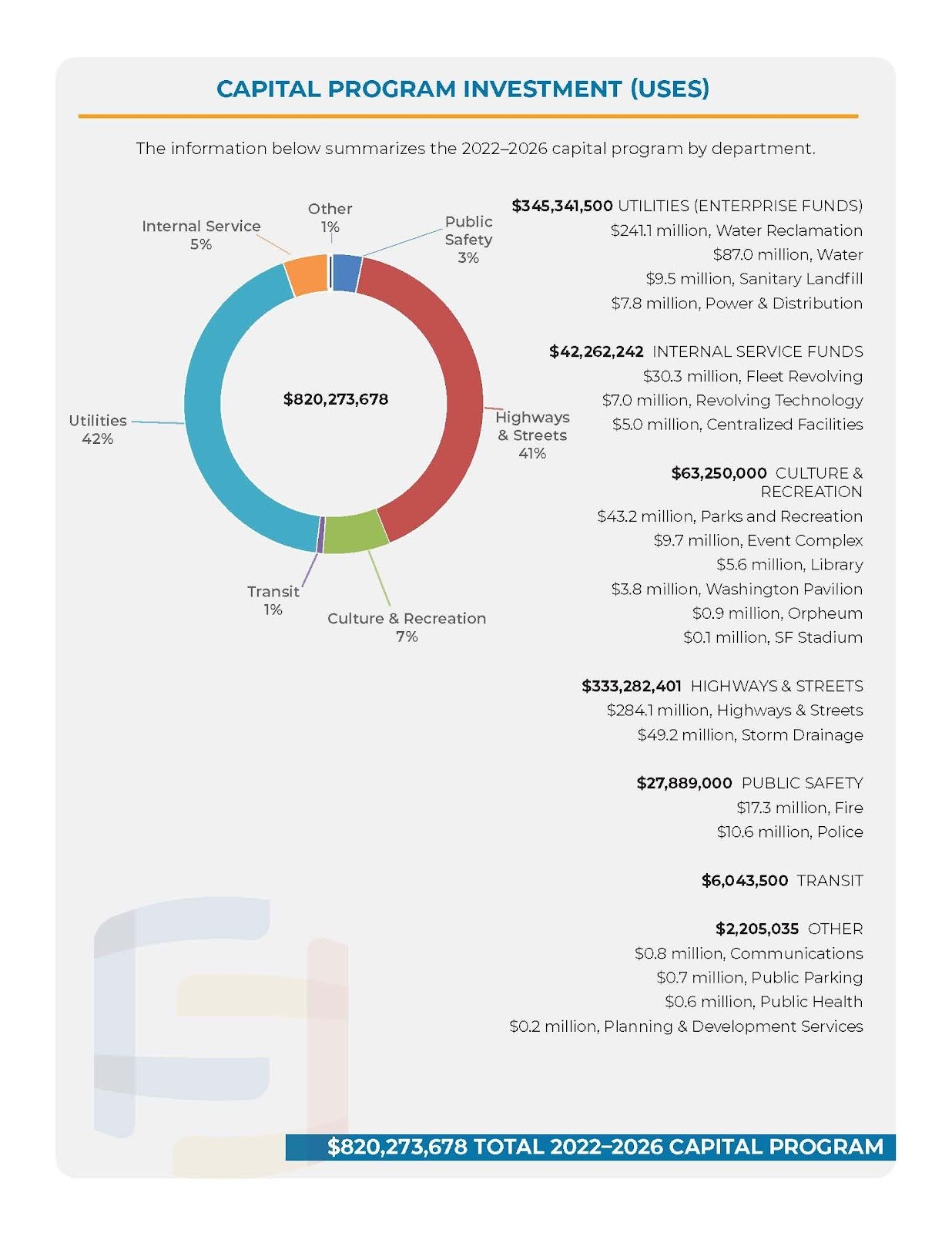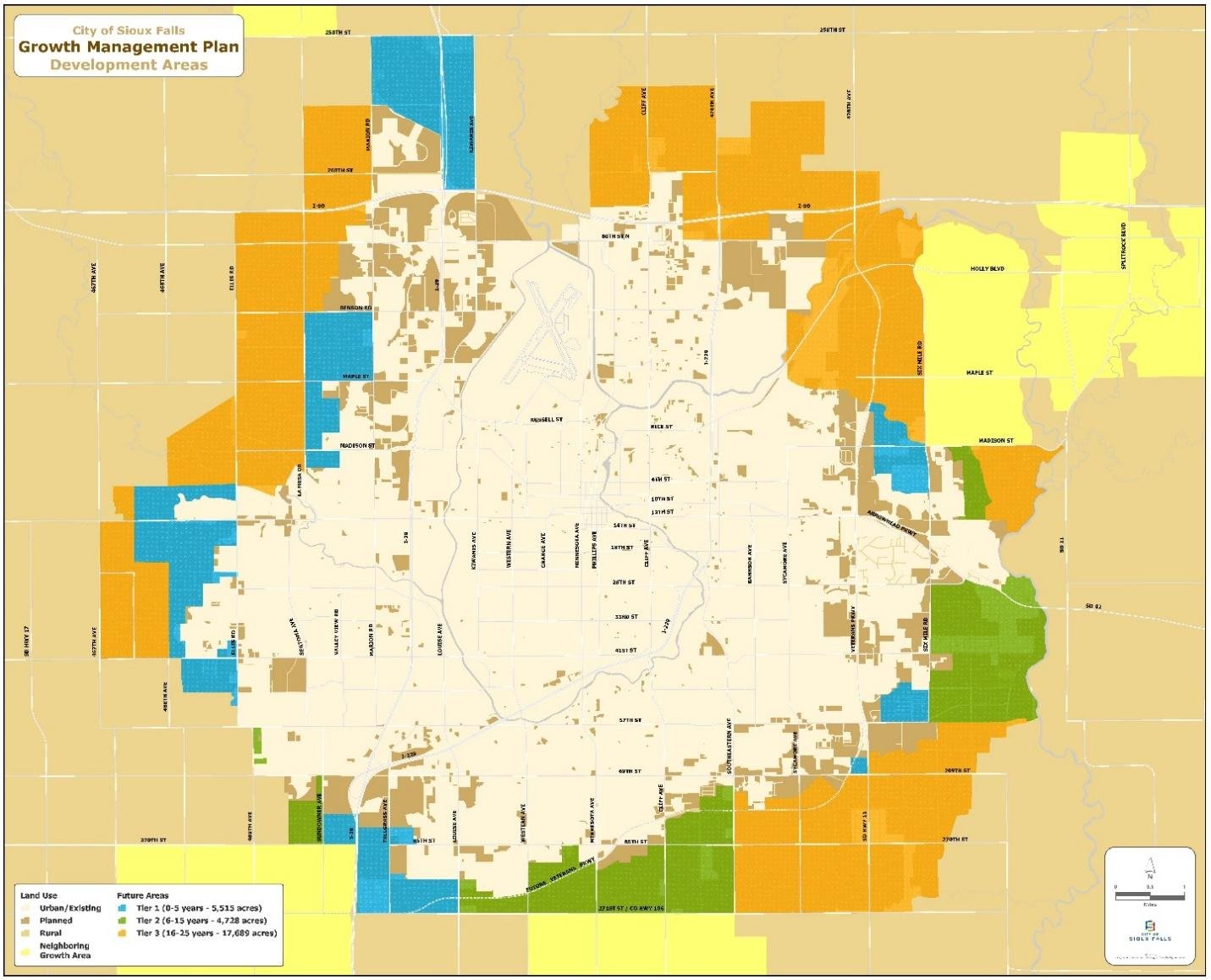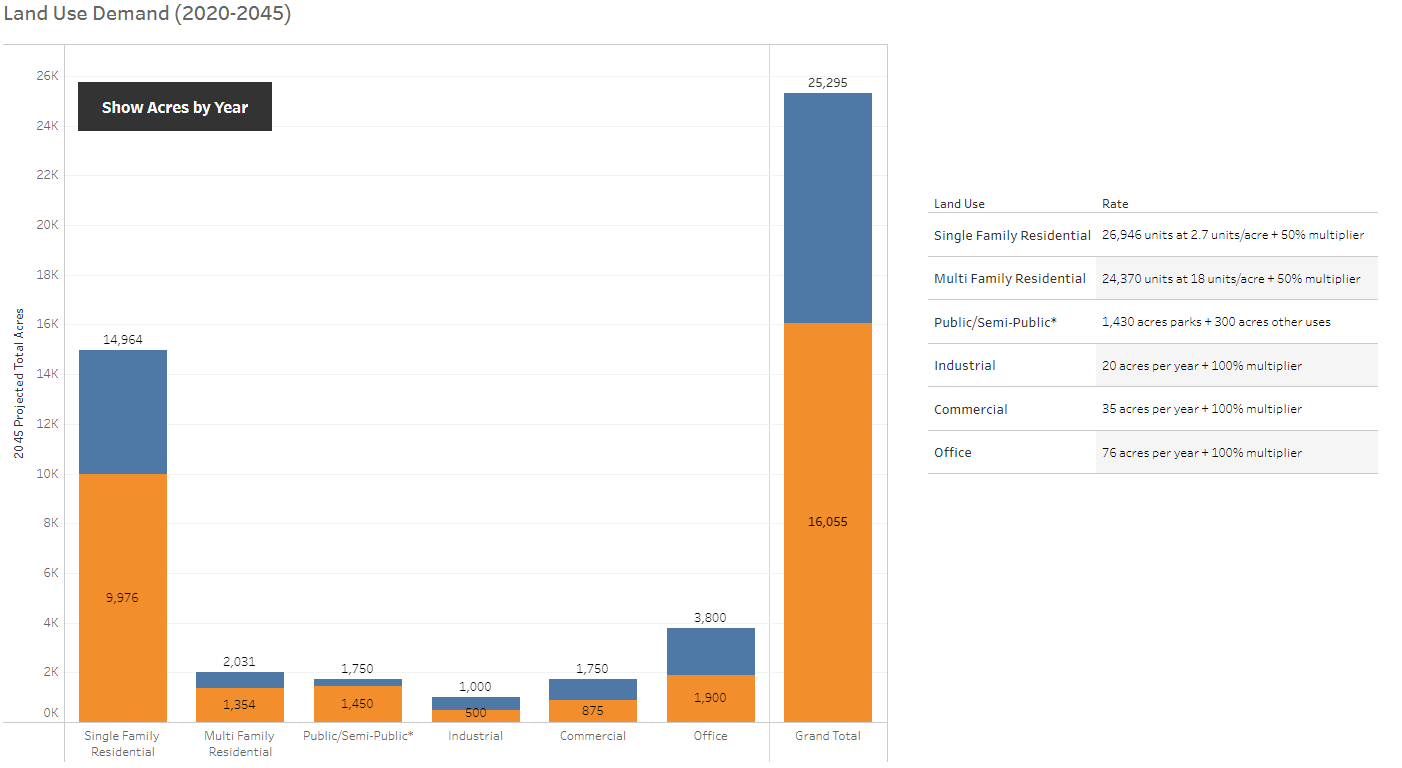By: Shannon R. Ausen, PE, and Kevin C. Smith, AICP
https://www.westernplanner.org/2022/2022/7/23/a-coordinated-approach-to-managing-growth-and-planning-for-capital-improvements
TRANSPORTATION SYSTEM FORMS THE BACKBONE OF INFRASTRUCTURE PLANNING
Sioux Falls is located in the southeastern corner of South Dakota. As the largest city in the state, Sioux Falls has grown from approximately 11 square miles and a population of 40,800 in 1940, to 80 square miles with a population of 190,750 in 2020. With an average annual growth of nearly three percent, a well-coordinated planning process has been a key factor in the success of the community. Similarly, the city’s ability to manage and guide infrastructure growth is also the result of the close working relationship between several city departments including Finance, Planning and Development Services, and Public Works.
A critical component of the city’s infrastructure is the transportation system. The Federal Aid Highway Act of 1962 required the formation of a Metropolitan Planning Organizations (MPO) for any urbanized area with a population greater than 50,000. This allowed regional communities to work cooperatively to effectively plan for transportation improvements.
Sioux Falls became an MPO in 1976 and established a regional transportation goal to have a cooperative, continual and comprehensive transportation planning process. As part of that overall goal, two main objectives were established:
-
To create a formal Capital Improvements Program which establishes establish a five-year plan of infrastructure improvements, and;
-
To create a Long Range Transportation Plan to provide continuing long-range comprehensive transportation planning capability designed to serve and guide land development, meet future travel demands, and in general serve the future planning needs of the area.
Collaboration with the surrounding communities and counties to identify regional needs remains a primary focus of the MPO. The transportation planning process for the agencies within the MPO are closely coordinated with other land use, water, storm drainage, sanitary sewer, and other infrastructure plans.
CAPITAL IMPROVEMENTS PROGRAMMING – A NEVER-ENDING TEAM EVENT
Each year the city updates its five-year Capital Improvements Plan (CIP), which establishes both new projects to meet the growth needs of the community, while also identifying projects needed to maintain and rehabilitate the existing infrastructure. We will focus this article on the city’s coordinated approach to managing growth and planning for capital improvements.
Planning and Development Services, Public Works, and Finance teams begin updating the CIP in the fall. The process takes several months before the City Council formally adopts the plan. Almost immediately, the process to update the next CIP begins again. The efforts of infrastructure planning are continual for many team members.
Each division of Public Works produces individual master plans of critical infrastructure (water treatment and distribution, sanitary sewer treatment and collection, and storm drainage) which are typically updated every 5-10 years. While each master plan is unique, the Planning and Development Services staff provides input on future land use developments to ensure overall compatibility with the city’s Shape Sioux Falls Comprehensive Plan. The Finance Department provides overall fiscal management of the CIP process and assigns Business Analysts to each department to provide internal financial advisory services.

The investments proposed in each five-year capital program reflect the broad-based goals of the community to accommodate growth while promoting redevelopment and reinvestment. The CIP process also benchmarks all potential investments and to determine their fit within the city’s vision statement of “Taking Care of Today for a Better Tomorrow.” The CIP acknowledges the continued demand for expanding our public infrastructure along with providing essential services that residents, visitors and businesses can rely on. A full copy of the CIP can be found here: live. https://www.siouxfalls.org/finance/capital-programs/2022-2026-cip/2022-2026-Capital-Program.
SHAPING SIOUX FALLS
The city’s Shape Sioux Falls Comprehensive Plan provides the foundation for future development by identifying where new development should occur and when areas should be opened for development. A specific Shape Sioux Falls principle states, “As plans are made to build, expand, or relocate public facilities, they should be done in conjunction with the Comprehensive Plan and Capital Improvement Program.”
To both guide future growth and provide the development community with a reliable timeline for the construction of critical infrastructure to support private investment, the city has created Growth Tier Maps as recommended in the Shape Sioux Falls Plan. The maps are intended to be updated each year to show both the current and future areas that will be available for the provision of urban services.
Based on historic and projected trends, the city strives to provide sufficient land to meet future growth needs. Generally, the city annexes approximately 700 acres per year to support both public and private development needs. The established Growth Tiers are based on those needs, as well as the city’s financial capabilities to provide the necessary infrastructure to support growth. Based on the land consumption rates and future funding constraints, the Growth Tiers are:
Tier 1: 0-5 years (5,515 acres)
Tier 2: 6-15 years (4,728 acres)
Tier 3: 16-25 years (17,689 acres)
The process of establishing the Growth Tier boundaries begins with a review of the future sanitary sewer basins and the city’s future transportation system network. Balancing the financial needs and capabilities to fund both of these critical infrastructure components requires a great deal of planning and coordination. Other layers of infrastructure are later included and staff reviews the overall picture to identify potential gaps, overlaps, and conflicts.
Each Division of Public Works, along with the Planning and Development Services Department participate in the growth planning process. The final Growth Tiers match closely with the 2045 Sioux Falls MPO Long Range Transportation list of priority projects and the city’s Sanitary Sewer 100-Year Master Plan.

After all divisions have coordinated the years, a final overall Growth Management Plan depicting the Growth Tiers is reviewed with the development community, the City Planning Commission, and is ultimately brought forward for City Council review and action.
SCALING FOR GROWTH AND CENTRALIZED FACILITIES
In the fall of 2021 the city undertook a new effort to expand on the Growth Tier planning process, called Scaling for Growth and Centralized Services. The purpose of the process was to facilitate a series of structured discussions focused on community growth and the impacts on centralized facility investment strategies.
Each department was given the opportunity to discuss their plan for future facilities, including what drives the need for future investments. In addition to city staff, a separate session included presentations by local developers to share their future growth plans and to gain a better understanding of the factors that influence private investment in Sioux Falls.

WHAT’S NEXT?
The outcome of the initial meetings was the need to strategically communicate, prioritize, and collaborate to seize opportunities on the location of expanded city facilities in response to the city’s current and anticipated growth. The city is now carrying the Scaling for Growth initiative further and is addressing these questions:
-
How do we drive more collaboration and coordination on strategic acquisitions across the enterprise?
-
How do we balance priorities and opportunities?
-
How do we commit to understand priorities and look for strategic partnerships, both internal and external?
-
How do we align funding sources and flexibility across various programs and segmented budgets?
-
How do we better connect and facilitate relationships with external stakeholders and the development community to understand real estate market dynamics?
-
How do we build relationships and leverage existing relationships with key land owners and developers?
-
What are immediate short-term opportunities for our departments in terms of land acquisition and how does that translate to the 2023 Capital Program and Budget priorities?
CONCLUSION
The City of Sioux Falls has a long-standing commitment to comprehensive land use planning and infrastructure planning. Likewise, the strong partnership between the Finance, Public Works, and Planning and Development Departments produces an annual Capital Improvements Program that addresses the community’s future infrastructure by planning for the right investments, at the right locations, at the right time.
Now more than ever communities need to dig deeper and look for creative and innovative ways to address their financial needs, while considering their overall growth plans. Through the annual Capital Improvements Program, ongoing Growth Tier mapping process, and implementation of the recommendations from the Scaling for Growth Initiative, Sioux Falls is well position to meet the future.
ABOUT THE AUTHORS
Shannon R. Ausen, PE is a civil engineer with the City of Sioux Falls, South Dakota, where she’s worked for over 30 years as the city has grown. She holds a civil engineering degree from South Dakota State University.
Kevin C. Smith, AICP, is the Assistant Director of Planning and Development Services for Sioux Falls, South Dakota, having returned to that position after 6 years with AE2S engineering as an operations manager. He represents South Dakota on the Western Planner Resources Board. Previously, Kevin worked for Sioux Falls in planning and public works. He holds an M.A. in Geography from Western Illinois University, and a B.S. in Geography from South Dakota State University.

































